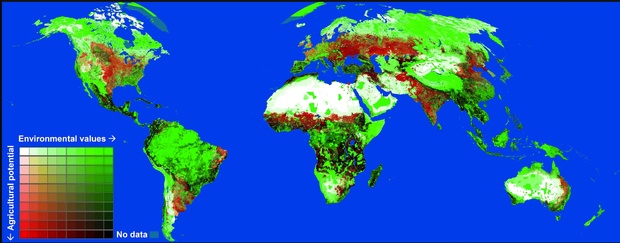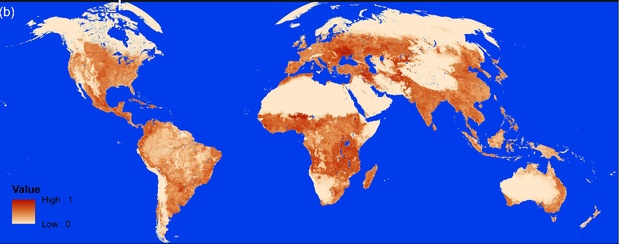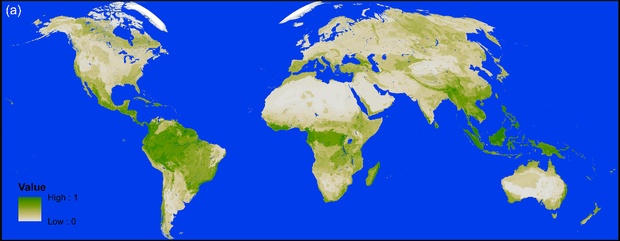
“Road Map” shows where economic benefits from roads are as high as the danger they pose to the environment.
“About 15 million miles of paved roads are likely to be put down by 2050. That’s a lot—it’s about 600 times the earth’s circumference.”
Most of the current road construction is happening in developing countries. But even in developed countries, there are some places where where adding more roads could really help economically. On the flip side, road construction in some of these regions could mean the death of natural biodiversity.
Roads trigger a “fatal syndrome of conversion and modification in the ecosystem,” says William Lawrance, professor of sustainability at James Cook University in Australia. Lawrance and a group of urbanists created a global “road map” showing the zones where the economic interests from building roads come into conflict with environmental interests.

First, they created a “road map” highlighting areas (in red) where adding roads would really boost economies. These are regions where there is already some agriculture, but the area is still disconnected from the nearest town of city; or regions where natural vegetation has been cleared for agriculture, but it’s not happening to the extent that it could, Lawrence says. Basically, laying down roads here could help farmers take their yield to the nearest town to sell, or bring back equipment and fertilizer to improve their current yield.
Their second map shows regions (in green) where maintaining the natural flora and fauna is imperative.
From our partners:

The final map (pictured at the top) combines the two, revealing spots where roads should be built and where they absolutely shouldn’t. It also shows in black what Lawrance calls “conflict zones”—regions which might see a tug-of-war between those on the side of road construction and those fighting for the flora and fauna.
“There are green areas and red areas—but boy, there’s a lot of black,” Lawrance says. He hopes the map informs people about the trade-off that comes with road development before they … go down that path.”
This feature originally appeared in Wired.

















